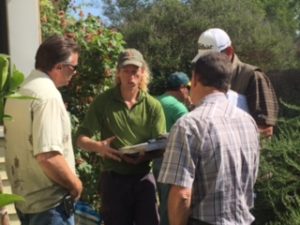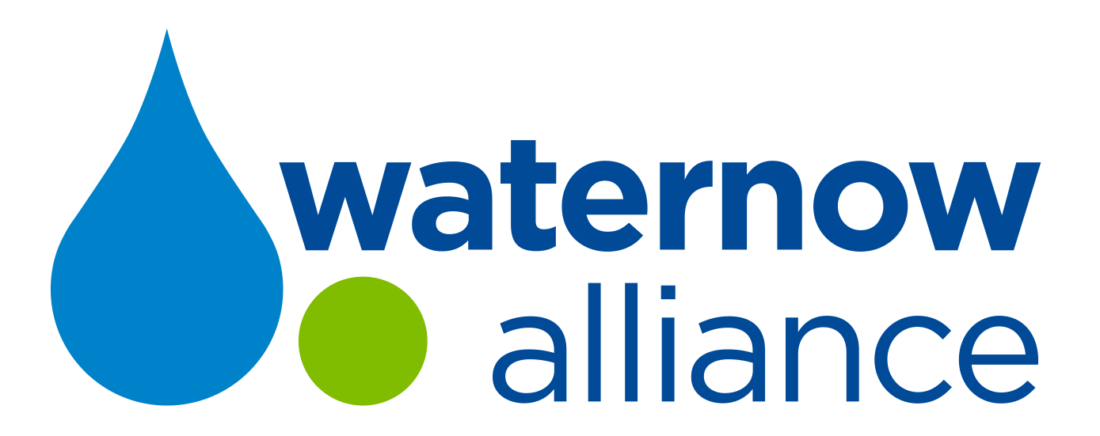 WaterNow Alliance partners with a select number of public water providers on innovative local water initiatives. Nashelley Kaplan-Dailey, Senior Project Manager for WaterNow Alliance, just wrapped up a pilot graywater project in Fresno, CA. Here are her notes from the field:
WaterNow Alliance partners with a select number of public water providers on innovative local water initiatives. Nashelley Kaplan-Dailey, Senior Project Manager for WaterNow Alliance, just wrapped up a pilot graywater project in Fresno, CA. Here are her notes from the field:
Graywater. You’ve probably heard of it. It’s the water from your washing machine, shower, and bathroom sink - accounting for as much as 65% of residential indoor water consumption. When re-used properly, graywater has huge water-savings, potentially reducing total household demand by 40%. This “soapy” water is safe to use for outdoor landscaping and California enacted a graywater law several years ago that establishes clear guidelines for how to use this resource appropriately.
Graywater has numerous benefits and can be an important part of sustainable integrated water management. Potential benefits include:
- Reducing potable water use by 16% - 40%, depending on the house/site (Cohen 2009)
- Lowering water bills
- Reducing energy use
- Lessening dependency on imported water and local aquifers
- Encouraging the use of nontoxic products
- Connecting people to their household water supply
- Alleviating failing or overloaded septic systems or treatment plants
- Providing drought insurance for your landscape
- Encouraging recharge of underground aquifers [1]
WaterNow Alliance is working to catalyze the proliferation of this simple, affordable, and accessible solution. While graywater isn’t for every city, or every home, it can be an effective tool for conservation and efficiency in the right places. That’s why we’re working with the cities of Fresno, Reedley, and Clovis in California’s Central Valley to educate homeowners, city officials, and professional landscapers about the benefits of graywater and encourage widespread adoption of it in these communities.
 Partnering closely with The Local Government Commission, we’ve helped launch the Water-Energy Community Action Network—San Joaquin Valley (WE CAN—SJV), a pilot program designed to reduce outdoor water use by assisting homeowners in disadvantaged communities to overcome the burden of high up-front costs required to replace water-thirsty lawns with drought-tolerant landscapes and graywater systems. We want to achieve immediate and long-term reductions in both water and energy use, as well as greenhouse gas emissions reductions through water and energy efficiency upgrades and installation of graywater systems at the single family, multifamily, and institutional levels.
Partnering closely with The Local Government Commission, we’ve helped launch the Water-Energy Community Action Network—San Joaquin Valley (WE CAN—SJV), a pilot program designed to reduce outdoor water use by assisting homeowners in disadvantaged communities to overcome the burden of high up-front costs required to replace water-thirsty lawns with drought-tolerant landscapes and graywater systems. We want to achieve immediate and long-term reductions in both water and energy use, as well as greenhouse gas emissions reductions through water and energy efficiency upgrades and installation of graywater systems at the single family, multifamily, and institutional levels.
To meet this ambitious goal, the program has three major components:
- We engage and educate the public through an outreach program targeting homeowners in the region
- We offer those homeowners substantial rebates for turf replacement, graywater systems and landscape upgrades
- We provide actual job training to local landscapers, plumbers, and contractors to meet this growing demand and blossoming industry.
We’re also working with the various permitting authorities to help educate staff on safe and effective graywater permit review, and to help streamline a permitting system that both protects the pubic and encourages adoption of graywater. An expensive, clunky, and restrictive permitting process can stop acceleration of this innovation in its tracks.
By working on projects like this we are showcasing what is possible in terms of both shifting attitudes and demonstrating real water and energy savings. This program can be scaled across the state and custom-tailored for nearly any city or town in entirety or as a standalone job-training program or permit policy assistance program. Interested in exploring graywater for your city? Give me a call!
[1] https://www.whollyh2o.org/graywater/item/348-uses-and-benefits-of-graywater.html
 Nashelley Kaplan Dailey is the Senior Project Manager for WaterNow Alliance. She was born and raised in Phoenix, Arizona where her love for water began with swimming pools and the Salt River. She attended the University of Arizona and then the University of San Diego School of Law where she delved deeper into water law and water policy. She can be reached at [email protected].
Nashelley Kaplan Dailey is the Senior Project Manager for WaterNow Alliance. She was born and raised in Phoenix, Arizona where her love for water began with swimming pools and the Salt River. She attended the University of Arizona and then the University of San Diego School of Law where she delved deeper into water law and water policy. She can be reached at [email protected].
